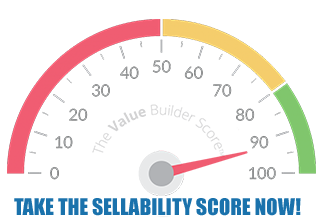Article written by Danielle Fugazy and provided courtesy of Axial.net
Middle market deal activity in the first half of 2019 is on pace with 2018’s record-setting figures in respect to both deal count and value. In Q2 2019, buyout shops closed 866 deals for a total of $124.2 billion, representing a year over year increase of 12.9 percent and 15.8 percent, respectively, according to Pitchbook Data.
The middle market continues to dominate the private equity sector. Middle market private equity deal activity (deal sizes between $25 million and $1 billion) comprised 82.4 percent of all buyouts in the U.S., marking five consecutive years. The middle market also made up 69.2 percent of private equity deal value in the first half, higher than any full year figure since 2014, according to Pitchbook.
Add-on acquisitions remain popular among middle market private equity firms looking to add value. In the first half of 2019, add-ons made up 59.5 percent of deal value as well as 68.8 percent of deals closed in the middle market.
“Private equity in the lower middle market remains vibrant and active. Riverside has seen a record pace of deal flow this year, especially in the lower end of the middle market where we focus our investing,” says Jeremy Holland, a managing partner at The Riverside Company. “Entrepreneurs have a plethora of choices today, whether it be full liquidity or growth capital. We are offering an array of private capital solutions to entrepreneurs, including non-control solutions such as structured equity and non-dilutive growth capital to B2B SaaS companies. It’s what makes sense today.”
Surprisingly, exits showed a decline in the first half of 2019. In the second quarter, middle market exit activity saw GPs exit 176 companies for a combined value of $31 billion—a decline of 19.4 percent. Although exits were down overall, there were five private equity-backed IPOs in the second quarter. The largest middle market exit of the quarter was Change Healthcare’s $557.1 million IPO, which had a valuation of $981.2 million. The company was initially taken private by The Blackstone Group and Crimson Ventures in 2011. In 2016, the company was merged with McKesson’s technology solutions business. What’s more, Pitchbook anticipates an uptick in IPO activity and corresponding IPO value going forward.
“We all know that add-ons can lower blended purchase price multiple and add scale, and they remain one of the most powerful levers into not only building bigger but better companies. Add-ons offer geographic balance as well as supplier and customer diversity. And oftentimes, they add intellectual property such as brands and patents. Perhaps most importantly, add-ons can bring tremendous human capital adding depth to our management teams,” says Holland.
Middle market fundraising figures were down in the second quarter, with $17.2 billion raised across 19 funds. Fundraising value in the first half of 2019 declined by 19.5 percent from the first half of 2018. Nineteen funds raised in Q2 is the lowest quarterly figure since Q3 2012. Some of the more notable funds raised include Silver Lake’s first mezzanine fund, Silver Lake Alpine Funds, which closed with $2.5 billion and is focused on making non-control equity and credit investment in technology and technology-enable companies. One first-time equity fund closed in Q2, Gainline Capital Partners, which held a final close with $155 million in May. Grain Communication’s Opportunity Fund II also closed during the quarter with $900 million. The firm focuses on investments in the global communication sector.
Middle market funds are a declining portion of all U.S. funds in terms of value as mega firms swell in size.
Is your business creating maximum value?
Complete the “Value Builder” questionnaire today in just 13 minutes and we’ll send you a 27-page custom report assessing how well your business is positioned for selling. Take the test now:




